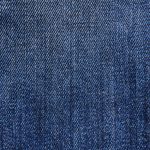Are you a beginner when it comes to evaluating fabric quality? Don’t worry, we’ve got you covered!
In this guide, we’ll walk you through the key factors to consider when assessing fabric quality. From texture and thread count to durability and weight, we’ll help you become a pro at evaluating fabrics.
So, get ready to dive into the world of fabric evaluation and make informed choices for your next sewing or purchasing project.
Table of Contents
Understanding Fabric Texture
To understand fabric texture, you need to feel it with your own hands. Evaluating fabric softness is an important aspect of understanding fabric texture. When you touch a fabric, pay attention to how it feels against your skin. Is it rough or smooth? Soft or stiff? The softness of a fabric can greatly affect its overall comfort and wearability. Fabrics that are soft and smooth tend to be more comfortable to wear, while fabrics that are rough and stiff may cause discomfort.
Another aspect of understanding fabric texture is determining fabric drape. Fabric drape refers to how a fabric hangs or falls when draped over a surface. You can evaluate fabric drape by holding the fabric up and observing how it flows and moves. Fabrics with good drape tend to flow and hang gracefully, while fabrics with poor drape may appear stiff and rigid.
Understanding fabric texture is essential when choosing fabrics for various projects. Whether you’re selecting fabric for clothing, upholstery, or home decor, evaluating fabric softness and determining fabric drape will help you make informed decisions. So next time you’re shopping for fabric, take a moment to feel the texture and observe how it drapes. It will make a world of difference in the final outcome of your project.
The Importance of Thread Count
When evaluating fabric quality, it is important to consider the thread count, as it directly impacts the overall durability and feel of the fabric. Thread count refers to the number of threads woven into each square inch of fabric. A higher thread count generally indicates a smoother and more durable fabric, while a lower thread count may result in a coarser and less durable fabric.
The table below illustrates the relationship between thread count and fabric quality:
| Thread Count | Fabric Quality |
|---|---|
| 200-400 | Average |
| 400-600 | Good |
| 600+ | Excellent |
Choosing the right thread count for your fabric is crucial as it can affect both the comfort and longevity of your garments. A higher thread count is often associated with a softer and more luxurious feel, making it ideal for bedding and clothing items that come into direct contact with your skin. Additionally, fabric with a higher thread count tends to be more tightly woven, resulting in a smoother and more wrinkle-resistant fabric.
Furthermore, fabric quality plays a significant role in the fit of your garments. Poor quality fabrics may stretch, shrink, or lose shape over time, causing your clothes to fit poorly. By selecting fabrics with a higher thread count, you can ensure better garment fit and longevity.
Assessing Fabric Durability
When assessing fabric durability, there are several important points to consider.
First, understanding the different durability testing methods can help you determine how well a fabric will hold up over time.
Second, there are various factors that can affect fabric durability, such as the type of fiber used and the weave structure.
Lastly, evaluating the fabric’s expected lifespan can give you an idea of how long it will last before showing signs of wear and tear.
Durability Testing Methods
You frequently assess fabric durability using various testing methods.
To determine fabric strength, one method is fabric strength testing, which involves subjecting the fabric to tension and measuring the force required to break it.
Another method is fabric abrasion resistance testing, where the fabric is rubbed against an abrasive surface to simulate wear and tear.
Additionally, you can perform fabric pilling resistance testing, which measures the fabric’s ability to resist the formation of small balls of fiber known as pills.
Another important testing method is colorfastness testing, which assesses how well the fabric retains its color when exposed to various conditions such as washing, light, or chemicals.
Factors Affecting Fabric Durability
To accurately assess fabric durability, it is important to consider the various factors that can affect the lifespan and performance of the fabric. Two key factors that can significantly impact fabric durability are fabric shrinkage and the impact of fabric dyeing on durability.
| Factors Affecting Fabric Durability | Impact |
|---|---|
| Fabric Shrinkage | Fabric shrinkage occurs when a fabric contracts or shrinks in size after being washed or exposed to heat. Excessive shrinkage can weaken the fabric, leading to reduced durability and potential damage. It is important to choose fabrics with minimal shrinkage to ensure longevity. |
| Impact of Fabric Dyeing on Durability | The process of fabric dyeing can affect the durability of the fabric. Certain dyes or dyeing techniques can weaken the fabric fibers, making them more prone to tearing or fraying. It is crucial to choose fabrics that have been dyed using high-quality dyes and processes to maintain durability. |
Evaluating Fabric Lifespan
To accurately assess the lifespan and durability of fabric, it’s important to evaluate its quality and consider factors such as fabric construction and care requirements. Here are some key points to keep in mind when evaluating fabric lifespan:
-
Fabric Construction: Pay attention to the weave or knit of the fabric. A tightly woven fabric is generally more durable than a loosely woven one.
-
Fabric Weight: Heavier fabrics tend to be more durable than lighter ones, as they can withstand more wear and tear.
-
Evaluating Fabric Color Fastness: Check if the fabric’s color is resistant to fading or bleeding. This can be done by rubbing a damp white cloth on the fabric to see if any color transfers.
-
Understanding Fabric Shrinkage: Some fabrics have a tendency to shrink when washed or exposed to heat. It’s important to consider this factor, especially if the fabric will undergo frequent laundering.
-
Fabric Care Requirements: Follow the manufacturer’s instructions for cleaning and maintenance to ensure the fabric’s longevity.
Evaluating Fabric Weight
When evaluating fabric quality, understanding fabric weight is crucial. The weight of a fabric can affect its drape, durability, and suitability for different applications. Factors such as fiber type, weave, and finish can all contribute to the overall weight of a fabric.
To accurately assess fabric weight, you can use techniques such as comparing fabric samples side by side or feeling the weight in your hands.
Importance of Fabric Weight
When evaluating fabric quality, it’s important for you to consider the weight of the fabric. Fabric weight refers to how heavy or light a fabric is and it plays a crucial role in determining its quality and performance.
Here are five reasons why fabric weight is important:
-
Durability: Fabrics with higher weight tend to be more durable and long-lasting.
-
Warmth: Heavier fabrics provide better insulation and warmth during colder seasons.
-
Draperies: Fabrics with more weight drape better and create elegant and flowing silhouettes.
-
Comfort: Lighter fabrics are more breathable and comfortable to wear, especially in hot and humid climates.
-
Quality: The weight of the fabric is a good indicator of its density and thickness, which are important factors in determining its overall quality.
Factors Affecting Fabric Weight
Consider five factors that can affect the weight of fabric when evaluating fabric quality.
The first factor is the fabric weight measurement. This refers to the actual weight of the fabric, usually measured in grams per square meter (gsm) or ounces per square yard (oz/yd²).
The second factor is the fabric weight distribution. This refers to how the weight is distributed across the fabric. A fabric with an uneven weight distribution may have areas that are too heavy or too light, affecting its overall quality.
Other factors that can affect fabric weight include the type of fiber used, the density of the weave or knit, and any added finishes or treatments.
It’s important to consider these factors when evaluating fabric quality, as they can greatly impact the performance and durability of the fabric.
Evaluating Fabric Weight Techniques
To evaluate fabric weight, you can employ various techniques that will help you determine the overall quality of the fabric. Here are some effective ways to evaluate fabric weight:
-
Evaluating fabric drape: Hold the fabric in your hands and observe how it hangs and drapes. A high-quality fabric will have a smooth and graceful drape, while a low-quality fabric may appear stiff or bulky.
-
Measuring fabric thickness: Use a fabric gauge or ruler to measure the thickness of the fabric. A thicker fabric is usually an indicator of higher quality, as it tends to be more durable and better at retaining its shape.
-
Comparing fabric weights: Compare the weight of the fabric to other fabrics of the same type. A heavier weight generally indicates a denser and more substantial fabric.
-
Considering fabric composition: Different fibers have different weights, so consider the fabric’s composition. Natural fibers like cotton and silk tend to be lighter, while synthetic fibers like polyester and nylon can be heavier.
-
Testing fabric stretch: Gently stretch the fabric and observe how it springs back. A good-quality fabric will have a moderate amount of stretch and resilience.
Examining Fabric Weave
Take a close look at the fabric weave to assess its quality. The fabric construction and weave play a significant role in determining the overall quality and performance of the fabric. When examining the fabric weave, there are a few key factors to consider: the tightness of the weave, the uniformity of the threads, and the fabric drape.
To evaluate the tightness of the weave, check if the threads are closely woven together with minimal gaps. A tightly woven fabric is generally more durable and less prone to snagging or fraying. On the other hand, a loose weave may result in a less sturdy fabric that is more likely to stretch or tear.
The uniformity of the threads is another important aspect to consider. Look for consistent thread thickness and even spacing between the threads. If the threads vary in thickness or if there are irregular gaps, it may indicate lower quality fabric.
Finally, consider the fabric drape. Hold the fabric up and observe how it hangs. A high-quality fabric will have a smooth and graceful drape, meaning it flows naturally and effortlessly. If the fabric appears stiff or rigid, it may not drape well when used for garments or home decor.
To summarize, evaluating the fabric weave is crucial in determining its quality. Use the table below as a guide to help you assess the fabric weave effectively.
| Key Factors | Indicators of Quality |
|---|---|
| Tightness of Weave | Closely woven |
| Uniformity of Threads | Consistent thickness and spacing |
| Fabric Drape | Smooth and graceful |
Considering Fabric Composition
Examine the fabric composition to gain insight into its quality and suitability for your project. The fabric composition refers to the materials used to create the fabric and plays a crucial role in determining its performance and durability. Here are five important factors to consider when evaluating fabric composition:
-
Fabric breathability: Consider whether the fabric allows air to pass through, allowing for proper ventilation and comfort. Fabrics that are breathable are ideal for garments and upholstery in warmer climates.
-
Fabric colorfastness: Check if the fabric’s color remains stable and doesn’t fade or bleed when exposed to sunlight, washing, or friction. Colorfastness is important to ensure that your fabric maintains its original appearance over time.
-
Fiber content: Look for the types of fibers used in the fabric, such as cotton, polyester, or silk. Each fiber has its own characteristics, such as strength, drape, and moisture-wicking properties, which can affect the fabric’s suitability for different projects.
-
Blended fabrics: Consider whether the fabric is made from a blend of different fibers. Blended fabrics often combine the best properties of each fiber, providing a balance of comfort, durability, and ease of care.
-
Natural vs. synthetic fibers: Decide whether you prefer fabrics made from natural fibers, such as cotton or linen, which are breathable and biodegradable, or synthetic fibers, such as polyester or nylon, which are known for their durability and wrinkle-resistance.
Identifying Fabric Finishes
Now, let’s explore the different fabric finishes that can further enhance the quality and appearance of the fabric you choose. Identifying fabric dyes is an important aspect of evaluating fabric quality. Different dyes can affect the color fastness, vibrancy, and durability of the fabric. Look for fabrics that use high-quality dyes that are resistant to fading and bleeding. This will ensure that your fabric retains its original color and appearance even after multiple washes.
In addition to identifying fabric dyes, determining fabric shrinkage is another crucial factor to consider. Fabrics that shrink excessively after washing can be a major inconvenience. To assess fabric shrinkage, you can refer to the fabric care instructions provided by the manufacturer. These instructions typically include details about whether the fabric needs to be pre-washed or if it requires special care to minimize shrinkage. It’s advisable to choose fabrics that have minimal shrinkage to maintain the original size and fit of your garments.
Frequently Asked Questions
How Do I Determine if a Fabric Is Suitable for Outdoor Use?
To determine if a fabric is suitable for outdoor use, consider its outdoor fabric durability and weather resistance. Assess if it can withstand harsh conditions and protect you from the elements.
Can Fabric Quality Be Determined by Its Color or Pattern?
Fabric quality cannot be determined solely by its color or pattern. While these factors can provide some insight into the overall quality, other factors such as material, weave, and durability must also be considered.
Is It Necessary to Wash Fabric Before Evaluating Its Quality?
Before evaluating fabric quality, washing fabric is not necessary. However, it can have an impact on fabric quality. Other fabric evaluation methods, such as checking for durability and texture, can also be used.
What Role Does Fabric Elasticity Play in Determining Quality?
Fabric elasticity is important in determining quality. It affects how well the fabric conforms to your body and retains its shape. The stretchability of the fabric is directly related to the overall comfort and fit of the garment.
Are There Any Specific Tests or Techniques to Assess Fabric Breathability?
To assess fabric breathability, there are specific tests and techniques available. These include measuring air permeability and water vapor transmission rate. Factors like fabric composition, weave structure, and finishing treatments can affect breathability.
- How Does Ring Spun Cotton Affect Garment Fit and Shape Retention? - August 13, 2024
- What Are the Challenges in Producing Ring Spun Cotton? - August 13, 2024
- Is Ring Spun Cotton Suitable for Plus-Size Clothing? - August 13, 2024





